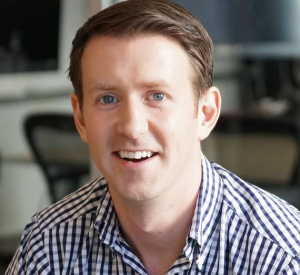Successful Pivot from B-to-C to B-to-B: Inkling CEO Matt MacInnis (Part 1)
If you haven’t already, please study our Bootstrapping Course and Investor Introductions page.
Here’s another pivot story. Note: pivots are very expensive to do in VC timeline and cap tables. Matt discusses how damaging the ownership structure has been. Worth understanding the ramifications.
Sramana Mitra: Let’s start at the very beginning of your journey. Where are you from? Where were you born, raised, and in what kind of background?
Matt MacInnis: I’m from Nova Scotia, Canada. I’m from a small island in the northeast, 300 miles to the nearest airport. My mom was a school teacher and my dad was a factory worker. We had a pretty good upbringing up there. It was a little bit cold in the winter. I ended up getting into Harvard somehow from that little town. We had to find a way to make that work. My parents, very graciously, gave their retirement savings to make that work.
I spent four years studying engineering at Harvard. I did Electrical and Computer Engineering. It was a pointed interest for me, but it was never the thing I wanted to do directly. I learned Chinese and spent time living in China during my studies. I was the President of Crimson which is the daily newspaper of Harvard. I was more into communications and leadership than I was into technology even though I was a complete nerd and loved new technologies. I wasn’t as good at math as any of the people around me. I had a really good experience of those four years. I worked for Apple as an undergrad and ended up getting a full-time job with them when I graduated.
Sramana Mitra: What did you do with Apple?
Matt MacInnis: I was a technical marketer. I was marketing the then really awesome G4 processor. I was working with engineers and scientists to build things. That put my technical foundation to good use. I ultimately ended up working on education-related stuff. I was marketing the Mac and, ultimately, the iPod to students in college.
They sent me back to China for two and a half years and I ran the market development group for education there. I worked with private and government education organizations across the region from India to South Korea excluding Japan. I got to travel a lot. I got to work with a very different educational context than the one that I came from. I ultimately got pulled back from China to do that globally for Apple before I quit to start Inkling.
Sramana Mitra: What year was that?
Matt MacInnis: I started Inkling in 2009. I got my green card in July of 2009, and I think I quit to start Inkling in August.
Sramana Mitra: Did you have an idea for Inkling already when you started?
Matt MacInnis: Yes and no. Mostly yes. I had seen the iPad in development. I knew about it before it came out. I knew that it was going to change the way people communicated and in the way they dealt with content. We figured it was going to destroy a lot of paper. I wanted to hitch my wagon to that horse. One thing that I skipped about my upbringing is that I always had an entrepreneurial, go-against-the-rules spirit.
I ran businesses in high school. I was called to the principal’s office once for selling a hand warmer, which was an apple juice can with a hole poked in it and a lightbulb inside. In my senior year, I ended up getting a government loan to run a business. I started doing, what was very high tech at that point, web consulting or helping businesses build websites on the Internet. That was in 1997. I’ve always had the entrepreneurial bug. That’s what propelled me to do the Crimson as an undergraduate.
I was always tinkering with ideas while I was at Apple but I couldn’t do any of them because I needed my green card. I convinced myself that I needed a green card before I did it. When it came in the mail, all the excuses were gone. The then current idea in my mind was what I ended up pursuing. We wanted to do textbooks. I knew the education market well. I knew the iPad was going to have some impact on education.
I decided to just go put my foot in that water and use my knowledge of the technology and the market to try and pull something off. The coming-out hypothesis was that digital, beautiful, interactive, updatable, reflow-able textbooks were the future. Static, paper-based, even PDF-based textbooks, were not going to be sufficient. Half of that hypothesis was true. Our hypothesis about what was going to be the winning product was incorrect. It took us many millions of dollars and many years to prove that.
This segment is part 1 in the series : Successful Pivot from B-to-C to B-to-B: Inkling CEO Matt MacInnis
1 2 3 4 5 6 7
Featured Videos
Can 1M/1M Help Me Raise Money?
How Does 1M/1M Democratize Entrepreneurship Education?
How Does 1M/1M Democratize Management Consulting?
When Is The Right Time To Join 1M/1M?
Can 1M/1M Help Me With Business Development?
Can 1M/1M Help Me With Market Sizing?
Can 1M/1M Help Me Validate My Product?
Will I Have Private 1-on-1 Sessions In 1M/1M?
How Does 1M/1M Help Entrepreneurs Connect With Silicon Valley?
Mentoring or Consulting?
Why Does 1M/1M Charge $1000 a Year?
Why Does 1M/1M Partner With Local Organizations?
Why Don\’t Mentoring Networks Work?
Why Is It Important To Study With 1M/1M Now?
Dan Stewart Story
Vikrant Mathur Story

